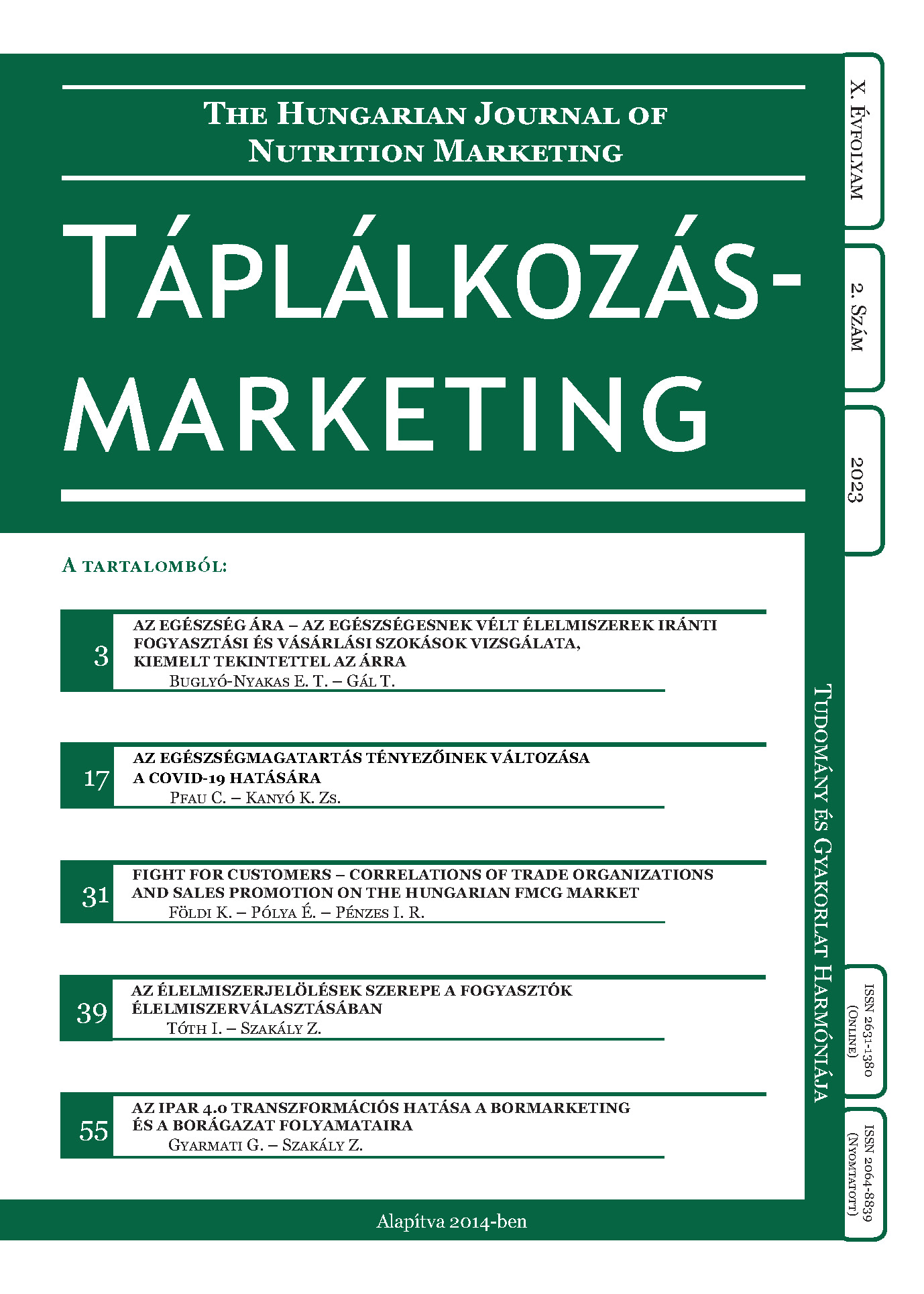The Price of Health – The Consumption and Purchasing Patterns of Foods with Special Attention to Price
Authors
View
Keywords
License
Copyright (c) 2023 Buglyó-Nyakas Erzsébet Tünde, Dr. Gál Tímea

This work is licensed under a Creative Commons Attribution-NoDerivatives 4.0 International License.
How To Cite
Abstract
The economic events of recent years (war, the COVID epidemic) have had a significant impact on our daily life, including our consumer and shopping habits. The main aim of this research is to examine how food consumption and purchasing habits have changed in response to price changes, particularly for foods perceived to be healthy. Two focus group surveys were conducted to explore consumer habits on this topic. The period covered by the research was the consumer prices in April 2022 and April 2023. Our research explored general food purchasing habits and consumer motivations. We examined the extent to which products that participants perceived as healthy were purchased online, and the impact of price changes on the demand for health-conscious foods and on consumers' brand loyalty. We also looked at the online price monitoring system, where we mapped consumer adoption and the consumer benefits that the system provided. One of our key achievements is to identify a growing consumer awareness, with more and more people choosing quality, expertise and choice over convenience and price. The types of consumer responses identified in the EUROPA.EU research was in terms of products perceived as healthy in the wake of the price rise, although the proportions have shifted significantly; many are looking for alternatives, seeking substitutes for products; and fewer are the concern-averse, loyal consumers and the well-off but not engaged. Price sensitivity is increasing as a result of recent sustained price rises, with a small proportion of people who are not concerned. There is also a low proportion of emotional comfort seekers, a group largely confined to high-income consumers. For those who are not aware of the price of products, there is no change in brand loyalty and no brand abandonment, but for those who are price-aware, there is a tendency to switch between brands.
JEL-CODES: I12, M31, M38


 https://doi.org/10.20494/TM/10/2/1
https://doi.org/10.20494/TM/10/2/1





